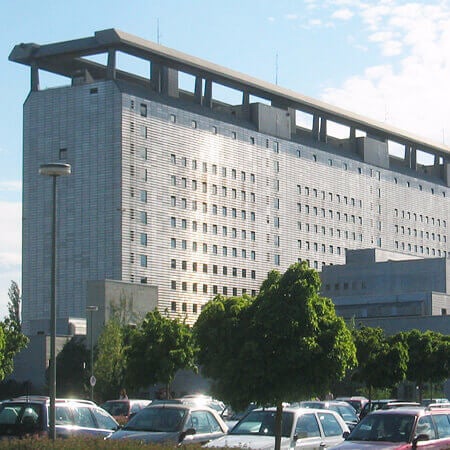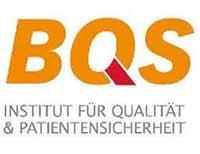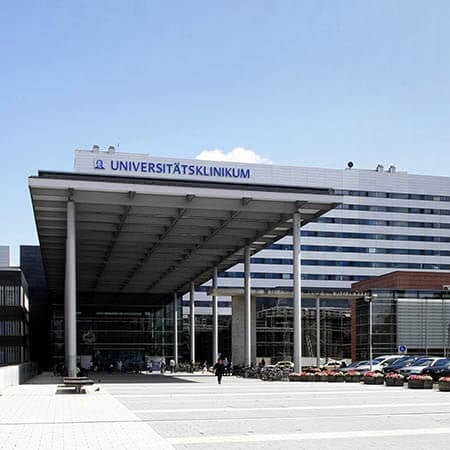Lower extremity arterial disease is one of the most common pathologies in the world, affecting 230 million people. The pathology often develops due to atherosclerosis and diabetes mellitus. The most severe form of the disease is critical limb ischemia. In unfavorable situations, this can lead to leg amputation and even death. If you want to avoid serious consequences, you can undergo your treatment of lower extremity arterial disease in Germany. Doctors in this country use not only surgical interventions to restore the blood supply to the legs, but also minimally invasive procedures from inside the blood vessels.
Content
- Principles of treatment
- Percutaneous revascularization
- Surgical revascularization
- Amputation
In most cases, arterial patency can be restored with a minimally invasive endovascular procedure: doctors perform angioplasty, which can sometimes be supplemented with stenting. Open surgery, as a rule, bypass surgery, is a rare treatment option.
You can undergo your treatment in one of the following hospitals: University Hospital of Ludwig Maximilian University of Munich, University Hospital Frankfurt am Main, or University Hospital Carl Gustav Carus Dresden.
You do not have to organize your treatment yourself if you make your treatment appointment through the Booking Health service. We will help you to choose a clinic and a doctor, and make your appointment for the nearest dates. We will also tell you about modern treatments and help you to select one of them, take care of your visa, flight and accommodation, and provide interpreting services. You can contact your personal medical coordinator for any questions.
Principles of treatment
Early stages of lower extremity arterial disease are treated with conservative methods. It is necessary to control diabetes mellitus with insulin preparations, a diet, oral hypoglycemic agents, blood pressure normalization, and dyslipidemia correction. Therapeutic exercises are considered one of the most effective treatment methods.
If medications no longer work, a patient requires revascularization, operations and procedures to improve the blood supply to the extremities. Doctors can dilate the blood vessels, implant stents, create new blood flow pathways bypassing the narrowed areas, and remove blood clots and atherosclerotic plaques. Which operation will be performed depends on many factors: the number of affected arteries, their caliber, localization, and the technical capabilities and human resources of the hospital where you undergo your treatment.
Healthcare professionals in Germany perform up to 80% of all surgical interventions for lower extremity peripheral artery diseases using an endovascular method: from inside the blood vessels and through a short incision on the leg. Only if percutaneous treatment methods are unpromising an open operation is performed. Most patients in countries with poor medicine receive more traumatic surgical treatment. Although treatment outcomes may be the same, open surgical interventions are associated with a higher risk of complications, levels of discomfort, hospitalization and rehabilitation periods.
Percutaneous revascularization
Minimally invasive procedures reduce the risk of limb amputation and death. With a proper selection of patients, the results are comparable to open operations. Endovascular manipulations are performed from inside the blood vessels under X-ray guidance. They are technically more complicated than open surgery, but they are safer and minimally invasive, do not leave large scars on the skin and do not require a long recovery.
The vast majority of percutaneous revascularization procedures are successful in Germany. Few patients require further open surgery.
Revascularization options are as follows:
- percutaneous transluminal angioplasty is the dilation of the blood vessels from the inside with an inflating balloon;
- stenting is the placement of a stent (frame) inside the artery to prevent its repeated narrowing.
Doctors in Germany started using the latest paclitaxel-eluting stents. These have better patency, better rates of blood supply recovery and a low frequency of repeated arterial occlusions (blocks).
Surgical revascularization
Most open surgical interventions are performed for critical limb ischemia. Doctors also often have to resort to surgical interventions due to the development of infectious complications.
During the operation, a doctor performs:
- thromboendarterectomy involves the removal of the inner layer of the blood vessel along with blood clots and atherosclerotic plaques;
- shunting involves forming a bypass around the narrowed section of the artery.
The most common option is shunting. Doctors form a new blood vessel from a patient's vein whenever possible. An artificial prosthesis can also be used.
Amputation
Timely revascularization avoids limb amputation. Still, some patients with critical limb ischemia develop complications that lead to tissue necrosis, so they must be removed.
Doctors usually perform a minor amputation, down to the level of the forefoot. The damage to a patient's mobility is minimal in this case. Those patients with extensive necrosis and gangrene, severe pain, systemic infectious complications and dysfunction of the internal organs require a major amputation.
You are welcome to use the Booking Health service to undergo your diagnostics and treatment of peripheral arterial disease in one of the German hospitals. On our website, you can find prices, compare the cost of treatment in different medical centers and make your treatment appointment at the best price. The Booking Health specialists will help you to find the most suitable clinics in Germany and organize your trip.
Authors:
The article was edited by medical experts, board-certified doctors Dr. Nadezhda Ivanisova and Dr. Sergey Pashchenko. For the treatment of the conditions referred to in the article, you must consult a doctor; the information in the article is not intended for self-medication!
Sources:
National Library of Medicine
Medscape
Science Direct


















